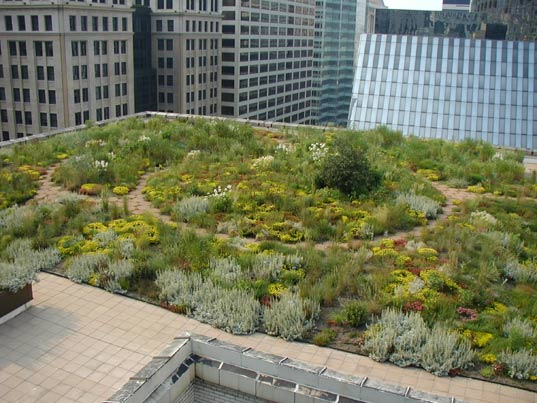If green roofs are good enough for rural Norwegians and Dubai's business men, then why not us?

Green Roofs Australia reports that New York City is the fastest growing area for incorporating green roofs into new and existing structures, most of which are on commercial buildings. The potential for positive environmental impact with these relatively simple green roofing/walling systems is, at this stage, beyond measurement. For these eco-friendly, and human-friendly, steps to take hold, the effort must be a concerted one, though, or the true benefits might only extend to those within view of the new verdant rooftops.
At left is the William McDonough-designed visitor center at the Bernheim Arboretum & Research Forest outside Louisville, KY with its green roof of native species -- a lucky pitstop this summer on a trip back down South!
If a public relations campaign can garner enough interest and support from both the corporate and government side, soon enough those antiquated folks with shingles, tar paper, cedar shake and tin above their heads will begin to feel significantly out-of-style. Perhaps keeping up with the Jones's will be the key to making skylines greener nationwide with the beneficial results trickling down to us all, after the sedum(s) on the roof get their drink, of course.
That's the idea and the effect is gorgeous, in many ways, depending on the sophistication of the design. The commercial applications seem long overdue.


Green roofs are a great idea when thought goes into them. Unfortunately, many are being planted with super invasive species.
ReplyDeleteRight, the designers must choose wisely. Native plants are probably best. Of course, then one begins to wonder: what plants are native to the concrete jungle?
ReplyDeleteCheck out this self-dubbed eco-resort in Thailand, Soneva Kiri by Sixth Senses:
http://www.sixsenses.com/Soneva-Kiri/Downloads/PDF/Eco-Villa-eInfo.pdf
They're using native ferns to populate the roofs of their guest quarters and routing grey water into artificial wetlands for filtration and later use in irrigation. Clever!